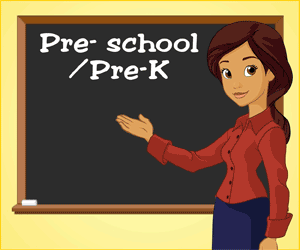Thursday, June 30, 2011
(A-24) TEACH ALPHABET THE OLD FASHIONED WAY
Dear Mr. Morton- I’m trying to teach my toddler the alphabet. I’m not pressuring him, but I’d like him to learn all the upper and lower case letters before he enters Kindergarten. I use a computer program that does everything for recognizing and matching letters, but he still has problems drawing them. Any tips?- Parents in Bay Village Dear Parents- I’m glad you’re making it a fun project. You don’t want to turn your todler off to school before he starts! First, toss the computer and get a hold of a small chalkboard, three-dimensional plastic or wood letters, a pile of 8½ x 11-inch paper, large pencils and crayons.
Decades ago, a lady name Grace Fernald practiced the theory that young children benefit from a multi-sensory approach to learning. Your computer screen can access worldwide events, but it cannot connect to your child’s tactile and kinesthetic modalities and neural pathways. Here’s how you can. On the large paper, use a magic marker to put dots ¼-inch apart to form a capital “A” at least 8-inches high. Your child can finger-trace the dots while saying “A-A-A”. The visual (seeing), tracing (tactile or touch), and auditory (hearing) modalities are used. But, since the letter “A” dots are drawn 8-inches high, his large shoulder and arm muscles are called into play. This is called kinesthetic input and is better than using small wrist and hand muscles.
Have him “feel” a three-dimensional wooden or plastic letter “A” for more tactile input. For review, have him close his eyes and feel several different capital letters he’s learned and guess which one it is. Saying aloud while tracing large letters through chalk dust with his index and middle fingers on the chalkboard also call in Grace Fernald’s multi-sensory approach: looking (visual)- saying (auditory)- kinesthetic (large muscles)- touching (tactile).
Gradually, remove the structure! Use fewer dots until only three are used to make the capital “A”. Eventually, he should be able to draw the “A” just by hearing its name. Next, start with “B”.
Related Posts: See Great Child Websites for free online computer games to teach alphabet and other academic skills, Kdn. through 12th grades.
Morton, M.Ed., Ed.S. has retired from his positions of School Psychologist and adjunct professor in the School of Leadership & Policy Studies at Bowling Green State Univeristy. A portion of Ad sale revenue from this site is donated to Big Brothers/Big Sisters of America. Concerns about family, parenting, educational or personal issues? Contact him on the secure Bpath Mail Form.
Subscribe to:
Posts (Atom)





